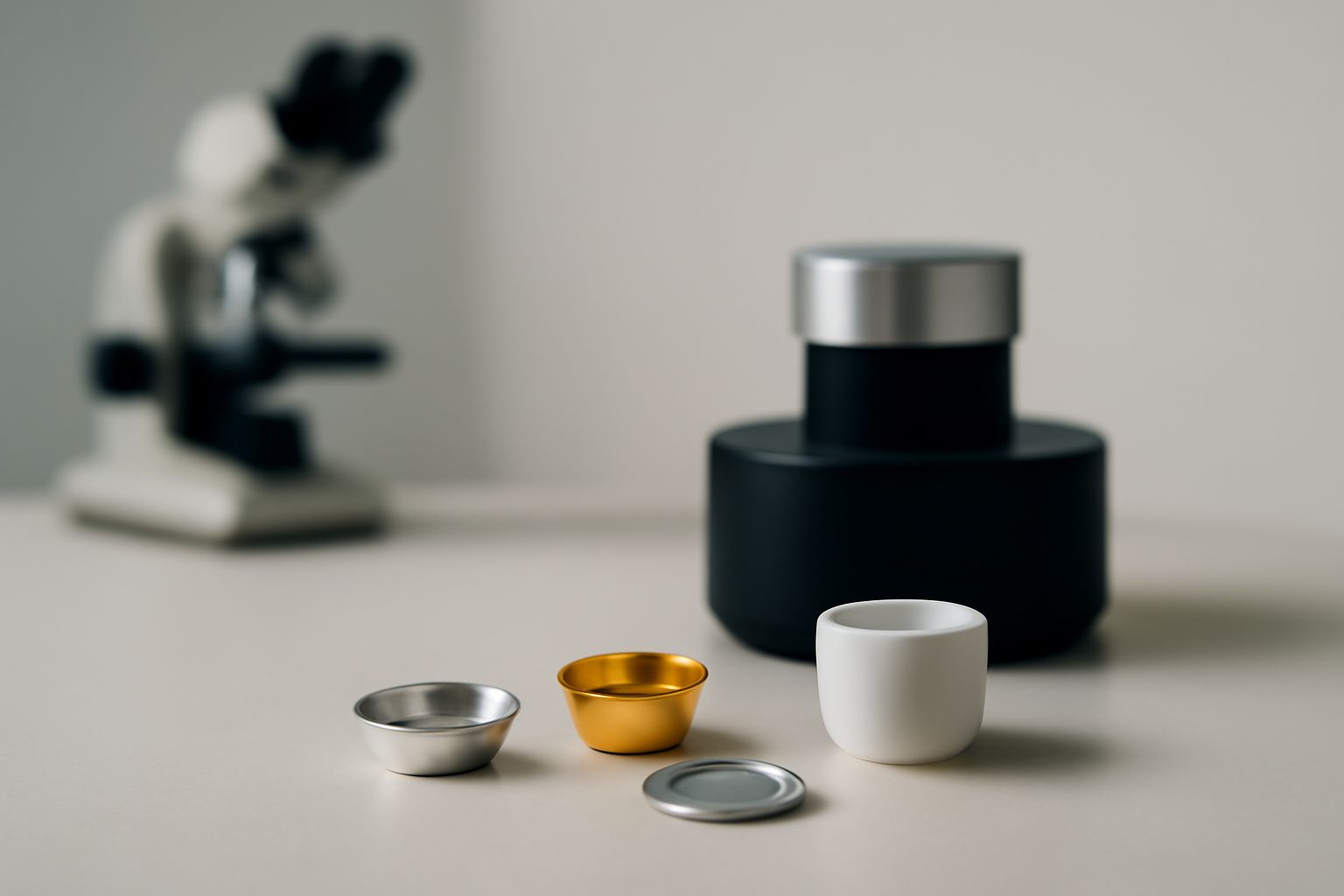Your cart is empty.
shop now
Your cart is empty.
shop now
Procurement mistakes in sample pans or crucibles lead to false data, wasted resources, and delayed research. Many labs face avoidable errors by ignoring key technical details when buying for TGA or DSC.
To efficiently procure TGA-DSC sample pans and crucibles, evaluate material compatibility, required temperature range, instrument fit, sealing options, and supplier reliability. Well-chosen consumables boost lab performance and cost-effectiveness.

After many years helping labs set up new workflows, I have seen the benefit of clear criteria and stepwise review before ordering. Getting these details right ensures better results and longer equipment life. Below is my practical guide for thermal analysis teams.
Ignoring sample characteristics can result in pans deforming, leaking, or contaminating sensitive materials during heating. Wrong pan types mean more retests and unreliable measurements.
Select pans by evaluating chemical resistance, max temperature, sealing features, and compatibility with the tested material. Confirm product certificates and typical batch consistency for best repeatability.
| Criterion | Reason | Supplier Expectation | Reference |
|---|---|---|---|
| Material compatibility | Prevents sample reaction and errors | Clear chemical info | DSC/TGA instrument manuals |
| Max temperature | Avoids melting or warping | Listed thermal range | ASTM standards |
| Sealing type | Retains volatiles, avoids leaks | Multiple lid options | Seal types |
| Batch consistency | Ensures repeatability | QC certificates | Supplier data sheets |
I always double-check the pan’s specs against the standard operating procedure. Small differences in material or seal can change the quality of your analysis.
Poor compatibility can cause pans to get stuck, give odd baselines, or damage equipment. Many labs waste time on mismatches that slow down analysis and increase operating costs.
Check compatibility carefully by using supplier fit guides, checking pan dimensions, and confirming reference lists for the specific instrument model before ordering.
| Instrument Brand | Common Pan Material | Fit Check | Tips | External Resource |
|---|---|---|---|---|
| TA Instruments | Aluminum, platinum | Use model-to-pan table | Order direct fit sets | DSC Wikipedia |
| Mettler Toledo | Aluminum, gold | Measure slot size | Review supplier database | Supplier’s catalog |
| NETZSCH | Alumina, aluminum | Supplier match list | Confirm batch code | Instrument manual |
| Shimadzu | Aluminum | Check pan ID | Use OEM codes | Online instrument guide |
I reference fit guides for every order and compare drawing or real sample before bulk purchase. This way, I avoid rework and keep every test on schedule with the right pan and instrument fit.
Neglecting cost differences can drain budgets, especially for high-frequency labs. Some materials give better value for specific jobs than others and affect total yearly spend.
Aluminum pans are budget-friendly for routine work. Platinum and gold last through harsh conditions but cost more. Ceramic and alumina pans give high-temperature resistance with moderate investment.
| Material Type | Typical Cost/Unit | Durability | Ideal Application | Life-Cycle Note |
|---|---|---|---|---|
| Aluminum | $0.2–$0.5 | Single use | Daily routine analysis | Low up-front, high long-term |
| Platinum | $30–$100 | Reusable, inert | Corrosive/critical samples | ROI after 30–50 cycles |
| Ceramic/Alumina | $2–$10 | Reusable, high temp | Metals, ceramics, special projects | Check for matching seals |
| Gold | $50–$200 | Inert, reusable | Premium or pharmaceutical | Careful cleaning needed |
I compare material costs each quarter. Choosing reusable or premium pans for special projects can bring savings by reducing reruns and disposable waste even if the unit price is higher.
Buying from unreliable suppliers risks delays, out-of-spec pans, or missing documentation. This can break lab workflows and hurt experiment quality.
Choose verified vendors with proven records. Check for clear certificates, batch data, technical drawings, and available customer support. Review shipping and return policies before finalizing orders.
| Evaluation Factor | Why It Matters | What to Check | Source |
|---|---|---|---|
| Certification and QC | Protects data quality | ISO, batch, specs | ISO 9001 |
| Customer Support | Solves problems fast | Live chat, drawings, phone | Supplier’s site |
| Shipping / Returns | Reduces risk | Fast, traceable, insured | Shipping guide |
| References/feedback | Validates quality | Lab testimonials, reviews | Industry forums |
I only order from suppliers who provide every technical document I ask for in advance. Strong support and traceable shipments reduce problems and keep the lab running on plan.
Careful evaluation of material, compatibility, cost, and supplier service leads to better results, smooth workflows, and value for money when procuring TGA-DSC sample pans or crucibles.
Contact technical support: info@redthermo.com